Announcement: Colorado Transfer Free Application Days
From Feb. 1 to Feb. 15 application fees are waived for transfer students. Learn more and apply.
Learn More
Windows 10 Accessibility Settings
To Open Accessibility Settings
- Go to Windows Icon (Start Menu) > Settings
- Click Ease of Access
The left column organizes the various accessibility settings. The right column is where changes are made.
Pro-Tips:
- Press Windows Key + U to open Ease of Access settings directly.
- The Ease of Access Center also provides links to other Windows settings which may be helpful to individuals with disabilities.
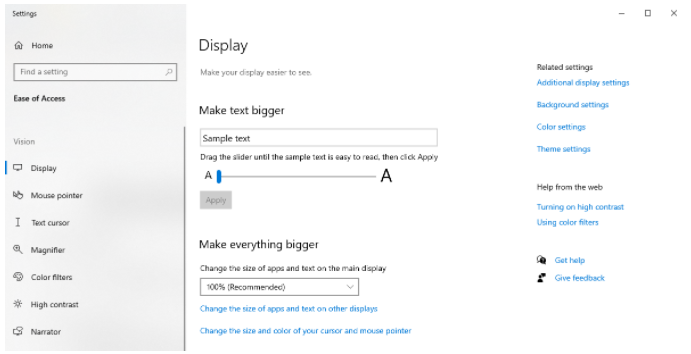
Make Text, Icons and the Pointer Bigger
Make Text Bigger
- Settings > Ease of Access > Display
- Make text bigger
- Adjust the text size slider
- Click "Apply" to save changes
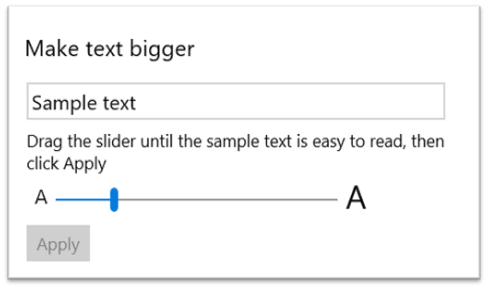
Tips & Notes
Make Text Bigger will increase the size of text found in menus, icons, and certain applications. However, some text may not become bigger, especially text found in applications from companies other than Microsoft (those that don't use Microsoft's system text).
Make Everything Bigger
- Settings > Ease of Access > Display
- Make everything bigger
- Select from the drop-down menu
- Click "Apply" to save changes
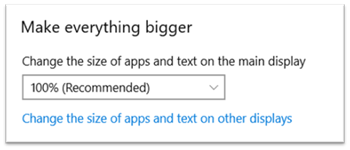
Tips & Notes
The Make Everything Bigger feature will increase the size of text no matter the application, however it will increase the size of everything including images, icons and apps.
Large Mouse Pointer
- Settings > Ease of Access > Mouse Pointer
- Change pointer size and color
- Adjust the pointer size slider
- Click "Apply" to save changes
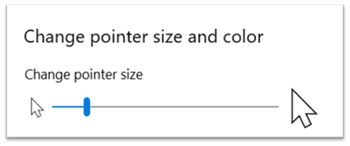
Tips & Notes
The color of the mouse pointer can also be adjusted. Look for the options under Change the pointer color in the settings window (instructions in the next section below)
Adjust Colors and Contrast
Change Pointer Color
- Settings > Ease of Access > Mouse Pointer
- Change pointer color
- Select an option
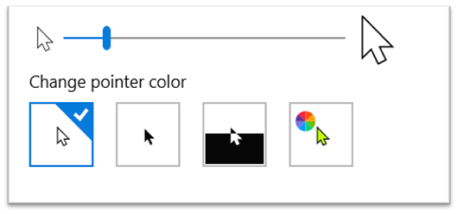
Tips & Notes
Choosing the inverted option adjusts the color of the mouse dynamically between white and black depending on the background color of the screen.
Apply Color Filters
- Settings > Ease of Access > Color Filters
- Use color filters
- Select a filter option
- Use the Turn on color filters toggle to apply changes
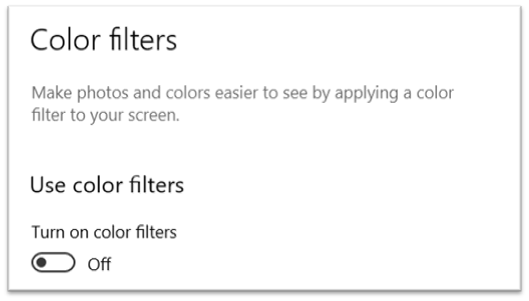
Tips & Notes
Choose from:
- Inverted, Grayscale, Grayscale inverted
- Deuteranopia, protanopia, tritanopia
Use the color wheel to assess the selected filter
Enable Dark Mode
- Settings > Personalization > Colors
- Choose your color
- Select from the drop-down menu
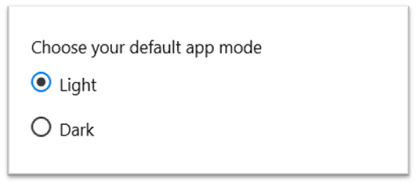
Tips & Notes
Dark mode replaces the standard light background & dark text system theme with a dark background light text theme which can make text easier to read for some individuals and may reduce eyestrain.
Try High Contrast
- Settings > Ease of Access > High Contrast
- Adjust the Turn on high contrast toggle
- Choose a Theme
- Select from the drop-down menu
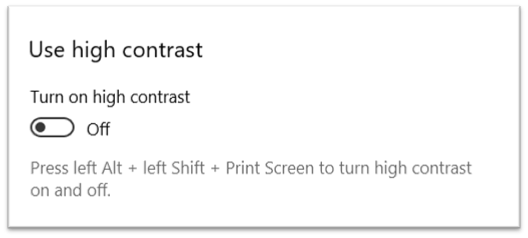
Tips & Notes
The selected theme can be customized.
Use Night Light
- Settings > System > Display > Color
- Adjust the Night light toggle
- Select Night light settings
- Click the Turn on now button
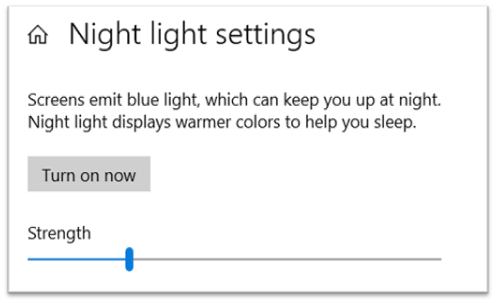
Tips & Notes
Night Light reduces the blue light emitted from the computer screen. Reducing blue light may reduce eye strain when used in dimly lit or dark settings.
Magnify Apps, Text and Use a Screen Reader
Use Windows Magnifier
- Settings > Ease of Access > Magnifier
- Use Magnifier
- Adjust the Turn on Magnifier toggle
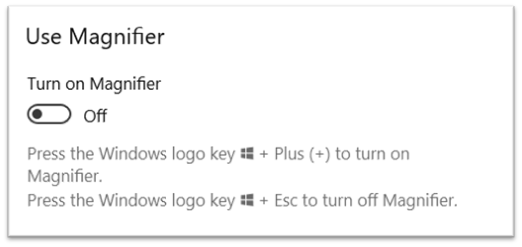
Tips & Notes
Windows magnifier can enlarge the entire screen, or parts of it as needed. Options can be adjusted using the magnifier window once it is enabled.
Zoom Apps
On the Web: hold CTRL and press the + key to zoom in.
In Microsoft Office: hold CTRL and use the scroll wheel on the mouse
Tips & Notes
Use these shortcuts to quickly increase the size of the text in programs such as any web browser or in productivity applications such as Microsoft Word or Outlook.
Use the Built-In Screen Reader
- Settings > Ease of Access > Narrator
- Adjust the Turn on Narrator toggle
Or,
Press Windows Key + CTRL + Enter to toggle the feature on or off.
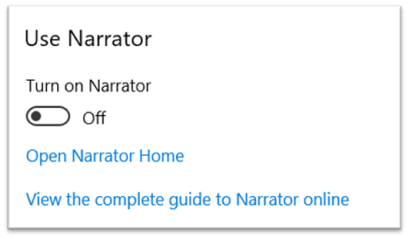
Tips & Notes
Narrator is a screen reader designed to support individuals who are blind or who have limited vision.
Audio Adjustment and Captioning
Activate Mono Audio
- Settings > Ease of Access > Audio
- Adjust the Turn on mono audio toggle

Tips & Notes
Mono audio may improve the listening experience for individuals who have significantly better hearing in one ear by combining the left and right audio channels into one channel.
Adjust How Captions are Presented
- Settings > Ease of Access > Closed Captions
- Adjust the appearance of the caption font
- Adjust the appearance of the caption's background.
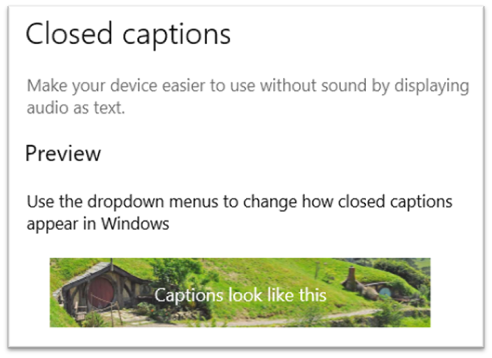
Tips & Notes
The closed captions settings provide several options for displaying captions for individuals who are deaf or hard of hearing. Captions can also be useful for people in noisy environments or who otherwise have difficulty listening. Options include adjusting the color, size, style and presentation of the caption text and its background.
Hands-free Dictation and Voice Control
Turn on Dictation
- Press Windows Key + H
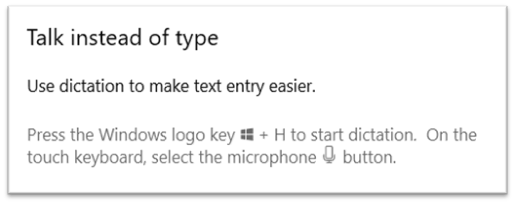
Tips & Notes
The computer must be connected to the internet to use dictation.
Turn on Speech Recognition
- Settings > Ease of Access > Speech
- Adjust the Turn on speech recognition toggle
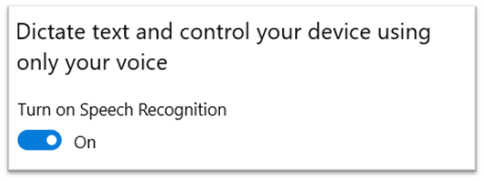
Tips & Notes
Speech recognition is designed for people who need assistance operating the computer by voice and requires some training to achieve a high level of accuracy. Use dictation instead for more limited assistance with typing.
Adaptive Keyboard and Mouse Settings
Activate Sticky Keys
- Settings > Ease of Access > Keyboard
- Adjust the Use Sticky Keys toggle
Or,
Press the Shift key five times to toggle the feature on or off
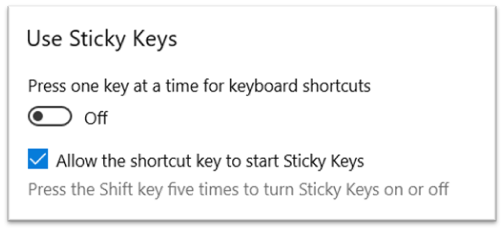
Tips & Notes
Sticky keys is designed to enable one handed activation of multi-key combinations such as CTRL+ P (print) or Alt + Tab (switch windows). The feature holds down each system key (CTRL, ALT, Shift or Windows) until an alpha-numeric key is pressed.
Turn on Toggle Keys
- Settings > Ease of Access > Keyboard
- Adjust the Use Toggle Keys toggle
Or,
Press and hold the Num Lock key for five seconds to toggle the feature on or off
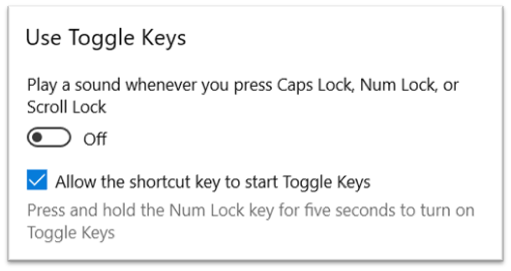
Tips & Notes
Toggle keys plays a sound each time the Caps Lock or Num Lock keys are pressed.
Turn on Filter Keys
- Settings > Ease of Access > Keyboard
- Adjust the Use Filter Keys toggle
Or,
Press and hold the right Shift key for eight seconds to toggle the feature on or off
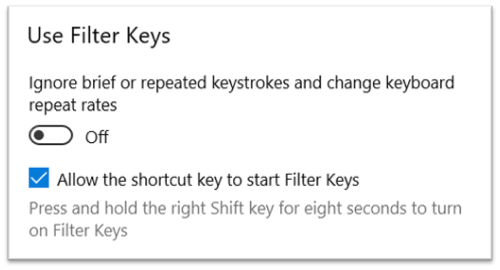
Tips & Notes
Filter Keys can be used to ignore brief or repeated keystrokes and may be useful for people who have difficulty targeting keys or who have a tremor in their hands. The feature includes three settings which can be individually adjusted:
- Bounce Keys: tells the keyboard to wait before accepting more keystrokes when the same key is pressed more than once.
- Slow Keys: tells the keyboard to wait before accepting more keystrokes.
- Repeat Keys: delays the keyboard repeat key function when holding down a key.
Use the On-Screen Keyboard
- Settings > Ease of Access > Keyboard
- Adjust the Turn on Narrator toggle
Or,
Press Windows Key + CTRL + O to toggle the feature on or off.
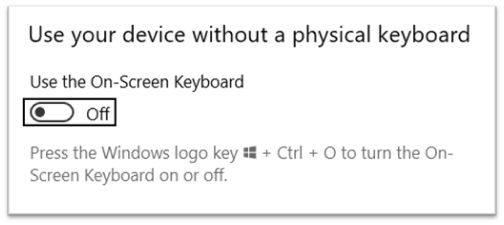
Tips & Notes
The on-screen keyboard may be an alternative to the hardware keyboard for individuals who have limited or no use of their hands because it can be controlled using external ability switches, adaptive pointing devices such as head pointing or using eye gaze.
Control Your Mouse with the Keyboard
- Settings > Ease of Access > Mouse
- Adjust the Control your mouse with a keypad toggle
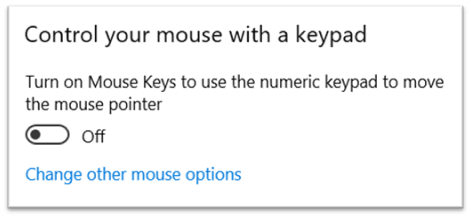
Tips & Notes
Allows control of the mouse using the numeric keypad on the hardware keyboard.
Support Focus, Reading and Writing
Configure Focus Assist
- Settings > System > Focus Assist
- Select between Priority Only and Alarms Only
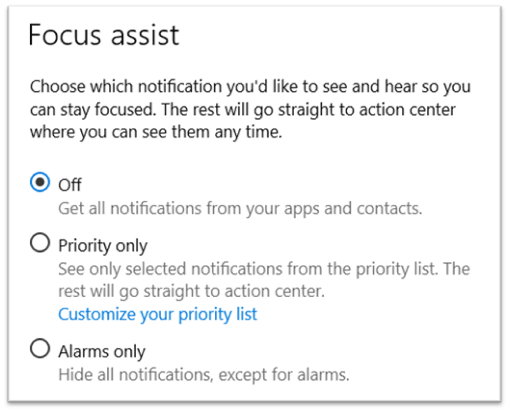
Tips & Notes
Focus Assist silences most notification sounds and pop-up alerts. The feature can be scheduled and only applied to specific apps by customizing the priority app list in the settings area. Once configured, Focus Assist can be accessed from the notification icon in the system tray.
![]()
Use Immersive Reader
In the New Microsoft Edge: Use the immersive reader button in the address bar or Press the F9 key.
In Microsoft Office 365: Open the Review Menu then select Read Aloud from the toolbar.
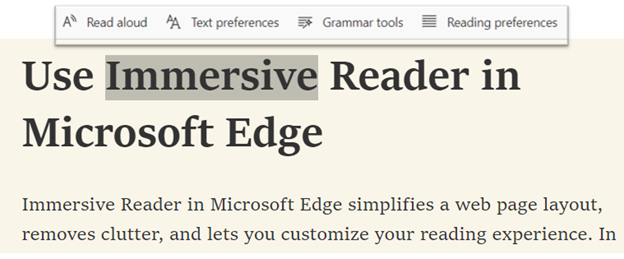
Tips & Notes
Immersive reader is available in many Microsoft products including Office 365 - Microsoft Word, OneNote, and Outlook - and in the Microsoft's Edge web browser.
Turn on Typing Suggestions
- Settings > Devices> Typing
- Adjust the Show text suggestions as I type toggle
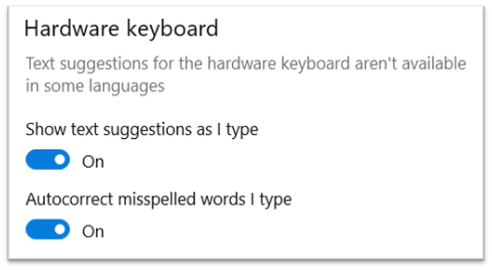

Tips & Notes
Once enabled, text suggestions are provided whenever the keyboard is used.
Center for Inclusive Design and Engineering (CIDE)
CU Denver
The Hub, Bioengineering
1224 5th Street
Suite 130
Denver, CO 80204
303-315-1280
Sponsored Programs
Engage with Our Center
Need Assistance?
CMS Login




